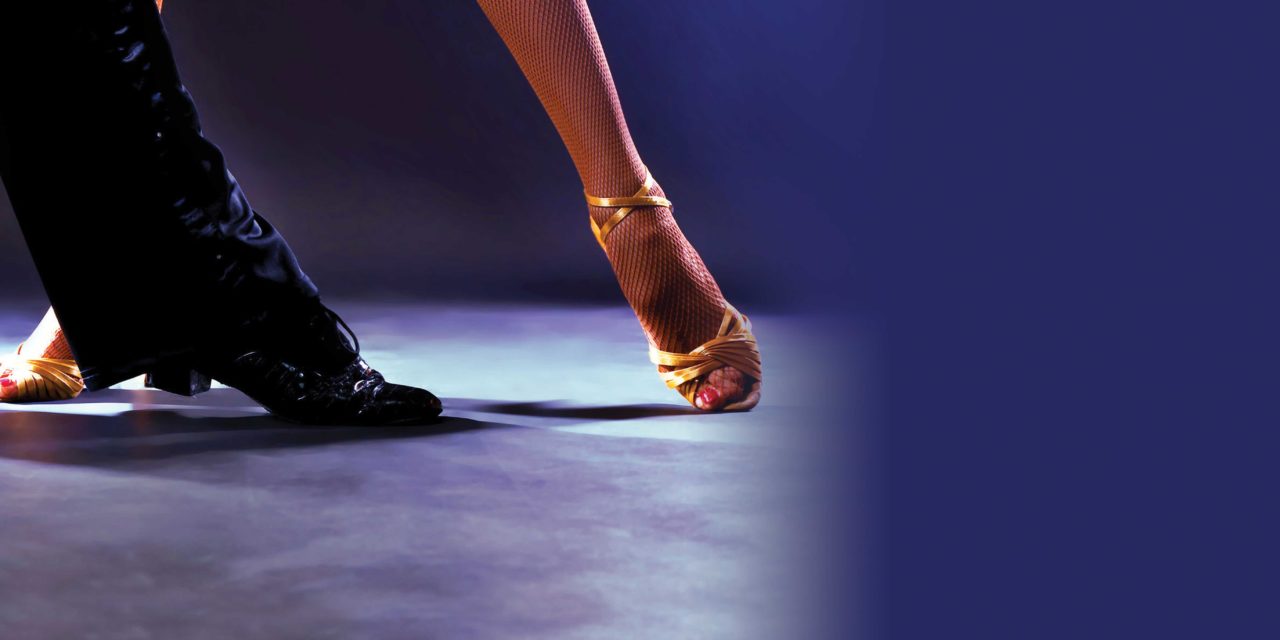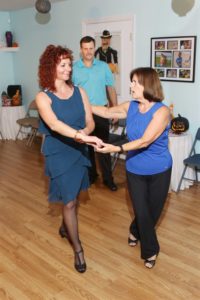by Jeffrey B. Roth, photography by Bill Ryan
Tripping the life fantastic was the shared passion of June Renner and her husband, Wayne, until death intervened.
“My late husband got us interested in dancing in the late 90’s and soon after we became competitors on the country dance circuit, competing in waltz, two step, cha cha and east and west coast swing,” said June, the founder and owner of Chance2Dance Studio, located in Hampstead.
“In 2000, we finished second overall in our division among 23 qualifying couples. I opened the studio in 2002, after my husband’s unexpected death in 2000.”
June, who was born in Owings Mills, moved to Hampstead in 1976. Wayne, a voice and data project manager, had always been physically active, explained June, who was a stay at home mom and substitute teacher at the time. Wayne wanted to find a new and fun activity as a form of regular exercise. They started country partner dancing Monday nights at Martin’s, and Thursday nights at Wilhelm’s in Westminster.
“We started competing a couple of years after we started dancing,” said June, who has studied with well-known teachers and coaches in Maryland and New York to learn the art and skill of being the leader in a partner dance. “We worked really hard and took a lot of lessons. We did very well from the beginning. A couple of years after he passed away, I got introduced to west coast swing, which is one of my best areas of expertise. I became very involved in the west coast swing community and took lessons from the top champions.”
In New York, June studied under Robert Royston, a critically acclaimed dancer, choreographer, musical producer and dance instructor, who produced the film “Love n’ Dancing,” starring Billy Zane, among others. About five or six years ago, June began training in the American style of ballroom dance, to learn to teach students how to lead.
“It was the first time I realized how difficult leading really was,” June said. “Dancing really isn’t as easy as it looks. Like any other sport it requires time and repetition to become proficient. However, if the desire to learn is there, anyone can become a good social dancer. I’ve never had a student unable to learn enough to have fun with it.”
Opening her own dance studio had not been something she had planned to do. After Wayne died, June was asked by event directors to do a dance in his honor at several dinner shows at competitions. Audience members impressed with her dancing skill approached her and said they wanted to take dance lessons from her.
“My first impression was: ‘I can’t teach; I don’t know what the guy does,’” June said. “I thought, well, just a few years ago, I didn’t know my parts; so maybe if I worked with the right people this was something I could do. I didn’t have a career so I started training. It’s been a great blessing to me.”
People choose to take dance lessons for different reasons. No matter the reason, June said it is the instructor’s job to make students feel at ease.
“When the walls come up for whatever reason, learning becomes impossible,” June said. “I tease my students telling them they all want to be my worst student. Everyone is quick to tell me they have two left feet, can’t hear or feel the music and will probably never ‘get it.’ My response to them is don’t worry about your two left feet, I will make one of them right. And when you can stop worrying about your feet, you’ll be able to hear and feel the music.”
In addition to teaching private and group lessons at the studio, June expends a great deal of energy competing with a partner and with students on the professional-amateur division of the west coast swing circuit. Students come from as far away as Annapolis and from Pennsylvania to study west coast swing. Five years ago, she began working with a certified ballroom instructor and has since added American style foxtrot, rumba, tango, hustle, salsa and nightclub to the curriculum.
“Ballroom dancing has been acclaimed in many medical journals and studies as being the most beneficial activity for keeping forms of dementia at bay,” June said. “Dancing is physical, mental and social and is good for overall well-being. One is never too old or too young to begin dancing. It’s good for you and it’s fun.”
Werner and Carol Uebersax, of Hereford, began taking lessons with June three years ago, prior to their daughter’s (Stacey Uebersax Phillips) wedding. Neither Werner or Carol had any dance experience beyond the most basic level, Werner said.
“We took lessons for about six months before the wedding, got to know June, became friends and invited her to the wedding,” Werner said. “We successfully danced at our daughter’s wedding—fell in love with June, fell in love with dance and continued to learn more dances; joined the Thursday night group and have been taking both private and group lessons with her ever since.”
Both Werner and Carol are retired and in their mid and late 60s. Werner said dance is a great activity for the mind and body.
“I like learning a new skill,” Carol said. “It grows my brain. Dancing is also good exercise and great for balance. After three years, I still don’t consider myself a good follower. My muscle memory kicks in on how patterns should proceed. When the leader changes the patterns, I don’t respond well. I continue to work on it. Learning to dance is one of the best things we ever did for ourselves. It is something enjoyable we can do together. Plus we found a new group of friends with a common interest.”
For more information on Chance2Dance Studio, visit
www.chance2dancestudio.com.



